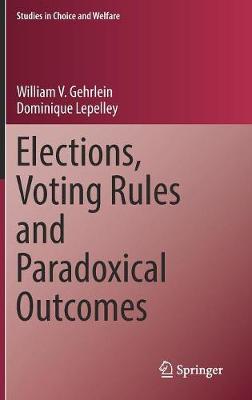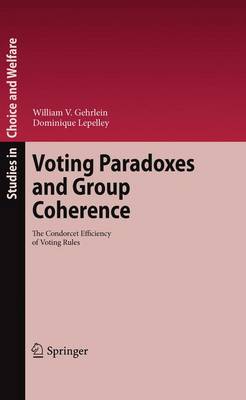Studies in Choice and Welfare
2 total works
Elections, Voting Rules and Paradoxical Outcomes
by William V Gehrlein and Dominique Lepelley
Voting Paradoxes and Group Coherence
by William V Gehrlein and Dominique Lepelley
The likelihood of observing Condorcet's Paradox is known to be very low for elections with a small number of candidates if voters' preferences on candidates reflect any significant degree of a number of different measures of mutual coherence. This reinforces the intuitive notion that strange election outcomes should become...
Read moreThe likelihood of observing Condorcet's Paradox is known to be very low for elections with a small number of candidates if voters' preferences on candidates reflect any significant degree of a number of different measures of mutual coherence. This reinforces the intuitive notion that strange election outcomes should become less likely as voters' preferences become more mutually coherent. Similar analysis is used here to indicate that this notion is valid for most, but not all, other voting paradoxes. This study also focuses on the Condorcet Criterion, which states that the pairwise majority rule winner should be chosen as the election winner, if one exists. Representations for the Condorcet Efficiency of the most common voting rules are obtained here as a function of various measures of the degree of mutual coherence of voters' preferences. An analysis of the Condorcet Efficiency representations that are obtained yields strong support for using Borda Rule.

